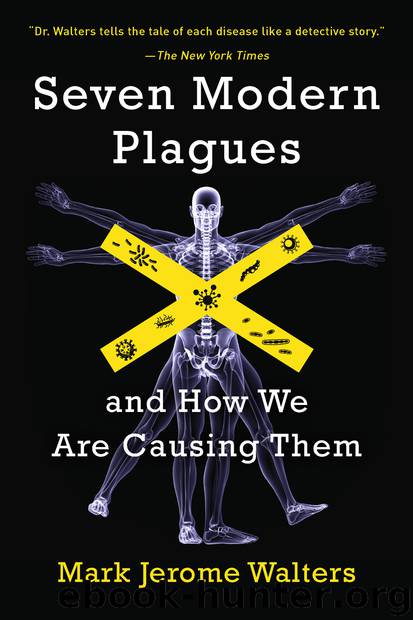Seven Modern Plagues by Mark Jerome Walters

Author:Mark Jerome Walters
Language: eng
Format: epub
Publisher: Island Press/Center for Resource Economics, Washington, DC
2.
The Colorado Plateau, which stretches across 130,000 square miles of southeastern Utah, northern Arizona, northwestern New Mexico, and western Colorado, has seen more rain and snow during the past twenty-five years than at any other time during the past two hundred. And those two centuries have been the wettest on the Plateau in the past 2,129 years. The Plateau is actually a huge basin filled with tablelands and surrounded by mountains. It is a world apart from the rest of the Southwest, older, with its own assemblage of plants and animals and climatic patterns.
The Plateau’s remarkable climatic history is told by ancient trees or their enduring remains—some more than a thousand years old. Each spring, beginning at a time lost to all but the memory of these relics, a new growth layer swelled beneath their bark. Toward the end of the growing season, as sap drained away, the layer remained, and the following spring a new one grew. Year by year, century by century, the process continued, creating a trunk of concentric growth rings. Rainy growing seasons tended to produce wide rings, and droughts created narrower ones. By extracting a straw-size core of wood and examining it under a microscope, tree-ring specialists such as Henri Grissino-Mayer at the University of Tennessee, Knoxville, can not only estimate a tree’s age by counting the rings but also get a sense of the climatic patterns of its time by analyzing the rings’ character and width.
There has been a dramatic long-term climatic shift on the Colorado Plateau, from desert-like conditions to, in more recent times, almost seasonal monsoons. Many climatologists attribute part of that shift to more frequent rises in ocean temperature near the western coast of South America, a phenomenon known as El Niño.
During El Niño years the surface waters off the west coast of South America become unusually warm, whereas during so-called La Niña years surface temperatures cool. These fluctuating ocean-surface temperatures can affect many aspects of the weather by influencing the amount of water that evaporates into the atmosphere and the course of high-altitude winds. The shift between El Niño and La Niña has historically been transient and mild. But in recent decades El Niño has been unusually persistent, leading to greater extremes in the weather, including increased precipitation in many places.
Because El Niño is accompanied by a slackening of the Pacific trade winds or even a reversal in their east-to-west direction, storms that normally pass over the Northwest can shift southward, dumping unusually heavy rains or snows on southern California and the Southwest.
If El Niño itself is natural, the extremes and duration of the heated Pacific appear to be something new—made worse by a warmer global climate, some scientists argue. And that, much evidence suggests, is the result of the present scale and character of human activity—the extent of automobile and truck exhaust, coal-powered generating plants, and other sources that emit heat-trapping gases into the atmosphere. According to Grissino-Mayer, who has studied the historical rainfall patterns on the Plateau, “global warming is intensifying many of the natural cycles such as El Niño.
Download
This site does not store any files on its server. We only index and link to content provided by other sites. Please contact the content providers to delete copyright contents if any and email us, we'll remove relevant links or contents immediately.
Nudge - Improving Decisions about Health, Wealth, and Happiness by Thaler Sunstein(7654)
iGen by Jean M. Twenge(5384)
The Fire Next Time by James Baldwin(5371)
Adulting by Kelly Williams Brown(4526)
The Hacking of the American Mind by Robert H. Lustig(4333)
The Sports Rules Book by Human Kinetics(4333)
The Ethical Slut by Janet W. Hardy(4206)
Captivate by Vanessa Van Edwards(3814)
Mummy Knew by Lisa James(3653)
In a Sunburned Country by Bill Bryson(3501)
The Worm at the Core by Sheldon Solomon(3448)
Ants Among Elephants by Sujatha Gidla(3437)
The 48 laws of power by Robert Greene & Joost Elffers(3123)
Suicide: A Study in Sociology by Emile Durkheim(2989)
The Slow Fix: Solve Problems, Work Smarter, and Live Better In a World Addicted to Speed by Carl Honore(2974)
The Tipping Point by Malcolm Gladwell(2861)
Humans of New York by Brandon Stanton(2846)
Handbook of Forensic Sociology and Psychology by Stephen J. Morewitz & Mark L. Goldstein(2676)
The Happy Hooker by Xaviera Hollander(2671)
